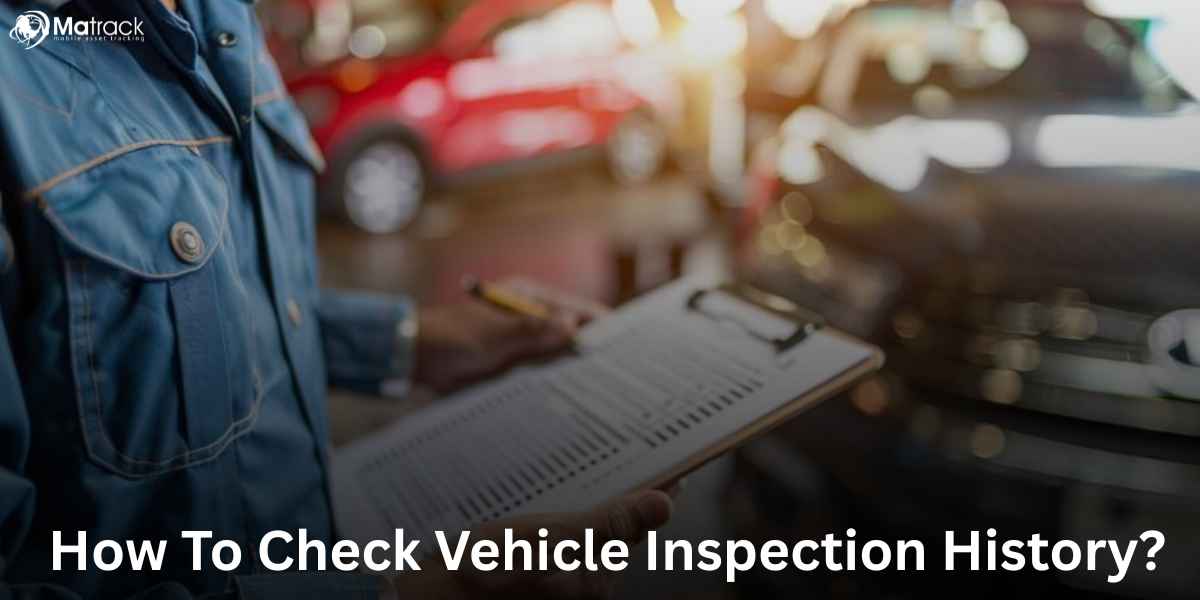Key Takeaways:
- Vehicle inspection history provides verified records of safety, emissions, and maintenance status based on official test outcomes.
- Checking these records helps identify recurring issues, confirm legal compliance, and validate a vehicle’s real condition.
- In the U.S., inspection history can be accessed through state DMV or emissions portals using the VIN or license plate number.
- For fleet management, inspection data improves safety tracking, lowers maintenance costs, and supports smarter replacement decisions.
What Is Vehicle Inspection History?
Vehicle inspection history means the documented records of each official safety, emissions, and mechanical inspection a vehicle has undergone. These records usually include inspection date, odometer reading, pass or fail outcome, specific deficiencies noted, and any required retest dates.
Why Is Checking Inspection History Important?
Checking inspection history gives you clear proof of a vehicle’s safety, condition, and maintenance track record. It’s the simplest way to avoid hidden problems and confirm the car’s real health before spending money or getting on the road.
Safety Guarantee
Inspection records show whether the vehicle passed checks for brakes, lights, steering, and suspension. These systems keep the car safe to drive. A history of passing results builds confidence that the vehicle met basic safety standards when tested.
Emissions Compliance Evidence
Each inspection shows how the car performed in emissions testing. If the results failed, they’re logged. That helps you spot past engine or exhaust problems, especially ones that weren’t fixed right away.
Transparency of Maintenance
Seeing the same issue show up more than once in the records is a red flag. It means a part keeps failing or wasn’t repaired properly. This helps you separate well-maintained vehicles from ones with ongoing problems.
Resale Credibility
Buyers trust cars that come with a clean inspection record. It proves the car was kept in check and passed official tests. That makes it easier to sell, often at a better price.
How to Check Vehicle Inspection History In the U.S.?
To check vehicle inspection history in the U.S., use your state’s Department of Motor Vehicles (DMV) or equivalent agency portal and the vehicle’s VIN. Follow these 5 steps to access official inspection records.
Step 1: Find the Vehicle Identification Number (VIN)
The VIN is a 17-character code unique to each vehicle. It appears:
- On the dashboard (driver’s side, visible through windshield)
- Inside the driver’s door frame
- On the vehicle title, insurance, or registration documents
Using the VIN ensures you access precise and complete inspection data.
Step 2: Visit Your State’s DMV or Emissions Testing Website
Each U.S. state handles inspection records through different departments:
- For emissions and safety inspections, visit your state’s DMV, DEQ, or DOT portal.
- Example:
- Texas – TxDPS Inspection History
- California – BAR Smog Check History
- New York – NY DMV Inspection Records
Search “vehicle inspection history [your state]” to find the exact portal.
Step 3: Enter VIN or License Plate Number
Use the portal’s search form:
- Enter the VIN for complete records.
- Some states accept license plate number as an alternate.
- Complete CAPTCHA or identity verification, if prompted.
Step 4: Review Inspection Results
After submission, the system will show:
- Inspection dates
- Odometer readings at inspection
- Pass or fail status
- Noted deficiencies or repair needs
- Re-test records, if applicable
This information shows inspection patterns and any recurring mechanical problems.
Step 5: Download or Save Inspection History
- Use the “Print” or “Download PDF” feature, if available.
- Save the file for personal records or resale use.
- Share the report with buyers, insurers, or service providers if needed.
In the U.S., each state maintains its own inspection database. Use the VIN and your state’s official portal to verify vehicle safety and compliance history.
How Vehicle Inspection History Affects Fleet Management?
Vehicle inspection history shapes fleet operations by improving safety, reducing costs, and guiding replacement decisions. It offers clear insights into how each vehicle performs under real-world conditions.
Enhances Safety
Inspection history confirms that each vehicle passed critical safety checks like brakes, lights, and steering. This helps reduce the risk of accidents and builds trust between drivers and management.
Improves Maintenance
Consistent records reveal wear patterns and common failure points across the fleet. Managers use this data to plan repairs before breakdowns disrupt operations.
Ensures Compliance
Most U.S. states require regular safety and emissions inspections for commercial vehicles. Inspection history provides proof that the fleet meets all legal standards.
Controls Costs
Tracking inspection results shows which vehicles generate high repair expenses. Removing those vehicles from service helps cut down unnecessary spending.
Guides Replacement
Vehicles with repeated inspection failures signal mechanical decline. These records help decide when to retire or replace a vehicle.
Protects Resale Value
Buyers look for well-documented inspection histories when purchasing used fleet vehicles. Clean records increase market value and speed up the sale process.



